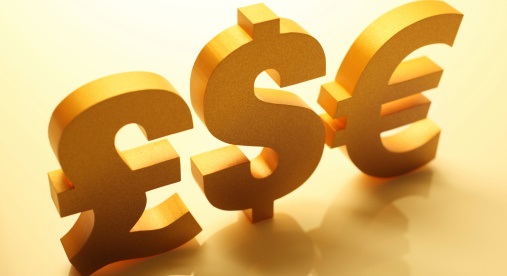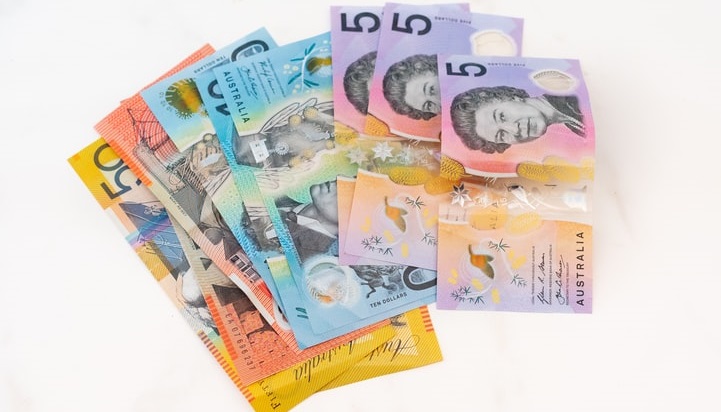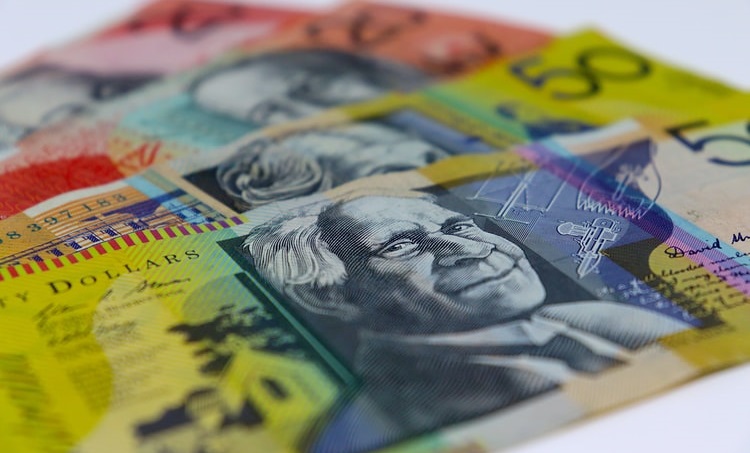Market Update
US equity index futures point to a flat US open, with S&P 500 futures having recovered sharply from earlier European session lows; futures dropped as low as 3870 but have recovered all the way back to the 3900 handles amid a pick-up in sentiment in European equity markets that has seen the Stoxx 600 index rally more than 0.6%. Bubble warnings from Chinese regulators appeared to weigh on global equity markets overnight and lockdown concerns in Europe were being cited as weighing on European markets early on, but the pessimism was short-lived as markets look forward to more stimulus from the US Congress; hopes are that the Senate will pass US President Biden’s $1.9T stimulus package by the end of the week.
In terms of other markets, US bond markets are relatively calm with 10-year yields flat around the 1.45%-mark, crude oil markets are relatively flat with WTI just under $61.00 and Brent just under $64.00 as participants look ahead to tonight’s API and tomorrow’s DoE inventory numbers as well as, more importantly, this week’s OPEC+ meeting; expectations that the cartel are set to hike output is being cited as behind some profit taking that has weighed on crude oil markets so far this week.
USD, EUR, GBP


The DXY has slipped back from earlier session highs of closer to the 91.40 mark but continues to trade with gains versus the majority of its G10 counterparts around 91.20, as dollar traders look ahead to a busy week; we have ISM Services PMI and ADP National Employment on Wednesday, Fed Chair Powell and Weekly Jobless Claims on Thursday and NFP on Friday as well as President Biden’s stimulus bill going to the Senate at some point. Meanwhile, the euro and sterling have been trading as a function of the US dollar; in tandem with early USD strength, EURUSD and GBPUSD fell to respective lows of just under the 1.2000 level and just under the 1.3860 mark, but in tandem with the buck waning from highs, both have recovered from lows, with EURUSD back in the 1.2030s and GBPUSD back above the 1.3900 handle and trading around 1.3920.
Stronger than anticipated Nationwide House Price Index data out of the UK for February (house prices were up 0.7% MoM versus expectations for a 0.3% drop) have not changed the dial much for sterling, which remains focused on this week’s budget announcement and the country’s vaccine rollout and reopening plans. Meanwhile, very poor German Retail Sales data for February released earlier this morning appeared not to dent euro sentiment too badly, despite retail sales dropping sharply by 4.5% MoM on the month versus expectations for a much more modest 0.3% drop. Focus was instead on the preliminary estimate for Eurozone Consumer Price Inflation in February; the report came in mixed, with the EU’s harmonized index showing a faster than anticipated YoY rate of price growth but Core CPI unexpectedly slowing to a YoY growth rate of 1.1% from 1.4% in January.
Elsewhere in Eurozone news, Germany is to reportedly extend lockdown restrictions until the 28th of March (they had been scheduled to end on the 7th) and is also reportedly set to ask citizens to avoid domestic and international travel over the Easter period in April. Meanwhile, separate reports suggest Italy is going to seek additional Covid-19 stimulus amid a worsening virus outlook. Additionally, we have had more ECB speak on recent bond market price action; ECB Vice President de Guindos said that the bank will have to see whether this increase in nominal yields will have a negative impact on financing conditions and if the bank concludes that it has, then they would be open to the recalibration of monetary policy, including via the PEPP. Strategists argue that a much more proactive ECB in seeking to counter rising European bond yields versus a much more sanguine Fed will be a EUR/USD negative.
AUD and the RBA
AUD is a modest outperformer out of the G10 currencies on Tuesday, with traders citing a more optimistic RBA as providing tailwinds. In truth, the post RBA reaction was a choppy one, with the currency initially under pressure. However, AUDUSD has rallied above the 0.7800 level in recent trade, though further gains in the absence of a broadly weaker US dollar will be hard to come by. In terms of last night’s monetary policy decision; as expected, the Reserve Bank of Australia left its main policy settings untouched last night, with the Cast Rate Target and 3-year Australian Government bond yield target both held at 0.1% and QE held at AUD 100B. Moreover, as expected, the RBA reiterated its prior guidance that it does not expect to start hiking interest rates until 2024, given that the bank expects it to take this long for the labour market to tighten and for wage growth to pick up significantly, and reiterated that it will not lift rates until inflation is sustainably back within its 2-3% target range.
On the outlook for the economy, the RBA came across as a little more confident, saying “the outlook for the global economy has improved over recent months due to the ongoing rollout of vaccines… While the path ahead is likely to remain bumpy and uneven, there are better prospects for a sustained recovery than there were a few months ago”. Meanwhile, the maintained a similar tone as in its last monetary policy statement with regards to AUD, saying that the Aussie “remains in the upper end of the range of recent years”. Note also that the RBA sent a strong message to markets that it is committed to its target of keeping 3-year bond yields at 0.1% – these comments come against a backdrop of the recent rise in global yields that had started to lift the 3-year yield above the RBA’s target, only for the bank to enter the market in size on Monday to keep 3-year yields under control (the bank bought AUD 3B in 3-year government bonds).
Elsewhere, Australian data was mixed, with Net Exports Contribution to GDP falling 0.1% QoQ in Q4 2020, less than the expected 0.3% drop and the Q4 2020 Current Account Balance coming in a little stronger than expected at AUD 14.5B (forecasts were for AUD 13.1B), but January Building Approvals seeing a huge miss on expectations, down 19.4% MoM in January versus forecasts for a drop of 3.0%. AUD seems not to have paid too much attention to last night’s data, with focus much more on the latest from the RBA.
NZD, CAD, JPY
NZD and CAD both trades flat this morning versus the US dollar, with NZDUSD having recovered from a brief dip below 0.7210 back to the 0.7250 mark and USDCAD back from session highs of just under 1.2700 and trading around the 1.2650 mark. NZD nurses losses versus its AUD counterpart, with some citing dovish remarks from RBNZ Assistant Governor Hawkesby overnight, who reiterated that there is still room for more RBNZ monetary policy easing if the economy needs it, given that the recovery remains fragile and uneven. Meanwhile, loonie traders are likely to remain in wait-and-see mode ahead of Canadian Q4 2020 GDP data, set for release at 1330GMT/0830EDT.
Meanwhile, JPY is nursing modest losses versus the buck, with USDJPY continuing to probe the 107.00 level, amid broadly disappointing data (which weighed on the Nikkei 225); in Q4 2020, Company Profits were down 4.7% YoY, Company Sales were down 4.5% YoY and Business Capital Expenditure was down 4.8% YoY. Meanwhile, the unemployment rate came in unchanged in January at 2.9%, a little better than expectations for a rise to 3.0%.
Day Ahead
Canadian Q4 2020 GDP numbers at 1330GMT/0830EDT will be the most closely followed data release today; the economy is expected to have grown at an annualised rate of 7.5% in the final quarter of last year. Meanwhile, the docket in the US is light, with comments from FOMC officials Lael Brainard (at 1800GMT/1300EDT) and Mary Daly (at 1900GMT/1400EDT) the highlights, ahead of the weekly API crude oil inventory report.
Thus, news regarding the pandemic (i.e. infection rates, vaccine rollouts, vaccine data) will be the key drivers, as well as news regarding US fiscal stimulus. In terms of the latest on that front; A group of 10 Democrat Senators, are reportedly to send a letter to US President Biden this morning urging him to include “recurring direct payments and automatic unemployment insurance extensions tied to economic conditions” as part of his “recovery” package (i.e. the infrastructure package that is set to follow the “rescue” package currently making its way through Congress). Investment in infrastructure seemingly holds decent bipartisan support, but if the Democrats try to include further spending on what the Republicans might call “handouts”, this could make the passage of the “recovery package” more difficult.




